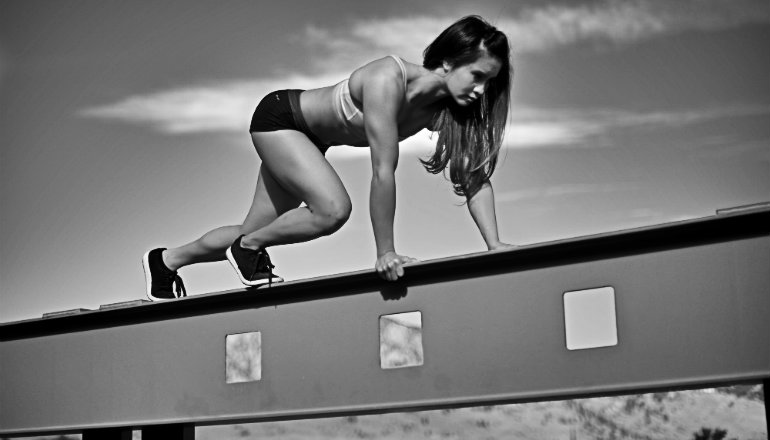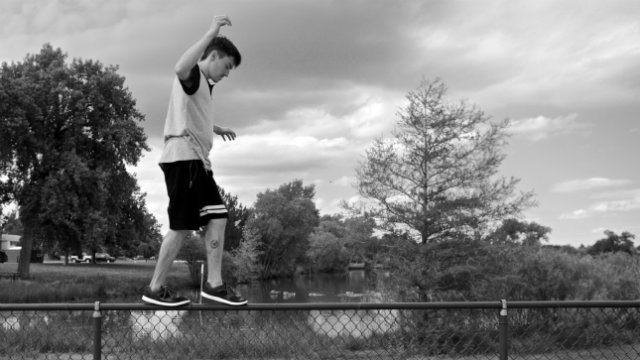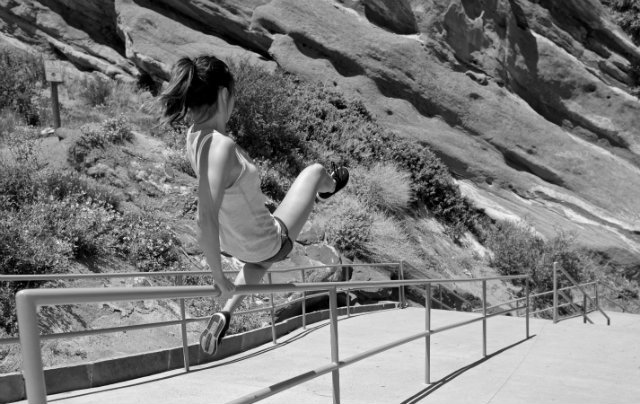 Reading Time: 6 minutes
Reading Time: 6 minutesWhen talking about movements like a cat leap, a monkey plant, and a quadrupedal gallop, you would think you were talking wildlife biology. You’d be close, but not quite right.
Phrases like these, including others like a kong vault and sloth shimmy, are lingo used by parkour athletes. Although the words are animal in nature, they describe the ways someone can overcome the obstacles within his or her environment.
While parkour has been around for over two decades, its popularity has exploded over the past few years. Is it a passing fad? Hardly. Even if it sounds foreign right now, a safe prediction is that parkour will enter your world sometime in the near future.
YouTube show reels might make it look like parkour is too dangerous for the average adult, but that is misleading. Those videos are like highlights from a high-level track and field event. Could an untrained adult stack up against an elite sprinter? Absolutely not. Could they at least lace up their shoes and go for a jog through the neighborhood? Undoubtedly.
The same situation applies to parkour. Throwing yourself from your neighbor’s balcony is a bad idea. Yet, putting on some sweatpants and scrambling around the low walls and picnic tables of your local park is a great workout.
Not only is parkour a great way to get fit, it is also an important life skill. Think of it as the tool that helps you move through your environment with speed and grace. Need to bound across the street to rescue a toddler that stumbled out into traffic? Parkour. Need to climb atop a roof to reach your crash-landed drone? Parkour.
Who knows if it will ever make it into the Olympics, but one thing is for certain – the sport is only entering its pre-teen years right now. There is a lot of growth coming before it reaches its adult height. As evidence of the trend, consider the following observations:
The Rise of Parkour-Specific Gyms
Twenty years ago, rock climbing and bouldering gyms were scarce. A few outdoor-oriented metropolitan areas had them, but by and large they were a rarity. Nowadays there is an entire business journal dedicated to indoor climbing. And, if you live in one of your state’s larger cities, chances are high there is a climbing facility or two near you.
That same trajectory is happening within parkour. When my gym, APEX Movement, opened its doors in 2009, it was the third parkour gym in North America. Fast-forward eight years, and there are now over five dozen gyms in the United States. From Connecticut to California, parkour gyms are popping up all over the place.
But what if you live in a city that doesn’t have a parkour gym yet? Or, what if you aren’t the gym-going type anyway? You are in luck. Fellow coach Ben Musholt and I just released a parkour-specific strength and conditioning manual, Parkour Strength Training, to help people get started.
The Popularity of Obstacle Course Racing
Tough Mudder. Warrior Dash. Rugged Maniac. These names have trampled a dirt-filled groove in our collective psyche, and for a good reason. Obstacle course racing, or OCR as it is known by its devotees, currently attracts more participants than both marathons and half-marathons combined. Why is it so popular? For one, challenging yourself against an obstacle course yields a great sense of accomplishment. And second, it is super fun to watch.
By definition, parkour is the training discipline that prepares you to overcome obstacles as quickly as possible. Many OCR competitors already train parkour as a supplement, and the more popular the events become, the more popular parkour will become, too.
In case you missed her Instagram post, 2014 CrossFit Games champion Camille LeBlanc-Bazinet recently tried parkour at APEX Movement in Boulder, Colorado. Surely, the masses won’t be too far behind.
Christopher McDougall
In Born to Run, Christopher McDougall explored a tribe of athletes who run practically barefoot through Mexico’s Copper Canyon. People credit that book as singlehandedly igniting a worldwide barefoot running craze. A whole industry of minimalist shoe companies arose to meet the needs of runners who wanted to spring down the trails as nature intended.
McDougall’s most recent book, Natural Born Heroes, investigates the training techniques that allow people to move like real-life superheroes. Take a guess at what he included within that list? Parkour. From his home on the east coast to the streets of the United Kingdom, McDougall takes his readers on a journey of crawling, balancing, and scrambling across a variety of city features.
If the influence of Born to Run is any benchmark, don’t be surprised if you hear your neighbor start gushing about how she just learned a lazy vault or a precision jump. Consider yourself forewarned. You are about to be flooded with tales of funny falls, new bruises, and other merit badges of parkour practice.
Global Population Shifts
Hardly a week goes by that our news cycle doesn’t have some tale of an escape from danger. One day it might be people diving for cover and crawling on their hands and knees to evade gunfire in a shopping mall or movie theater. Another day it might be concertgoers trying to exit a music venue engulfed in flames.
It is a sad reality, but you should ask yourself: do you have the ability to flee these modern situations? More than half the world now lives in an urban setting and the stressors unique to such environment are a lot different than those of the wilderness. Our ancestors might have evolved to run down prey across an open landscape, but that skill has little relationship to our survival nowadays. Sure, jogging has important health benefits, but it is unlikely to help you survive a life-or-death situation.
Contrast that with being able to roll across the asphalt because you took a spill on your bike. Or think about surviving a tumble down the steps to the subway. Both are real-world examples that could result in a broken bone – or worse – for someone without prior training in parkour.
Speaking of falls, the other population shift to keep an eye on is the aging baby boomers. 10,000 of them turn 65 each day, and they are not a generation ready to pass quietly into old age. They love being active. And because falls and hip fractures are a leading source of disability in the elderly, you can be sure there will be a surge in interest in older adults learning to move better.
Does that mean parkour gyms are going to start offering classes for the elderly? Maybe. Maybe not. But if you think the idea is too far-fetched, do a search for the To Be and To Last documentary. It highlights adults sixty years and older learning the basics of parkour. Your mom has probably already been doing yoga for a few years now. How disconnected will you feel if you pick up the phone and hear: “Hi honey, guess what? I just learned how to cat balance in parkour class!”
Parkour Is Here to Stay
The fitness world has been rocked by its share of passing fads, but I’m here to tell you parkour isn’t one of them. If you have yet to take class or attend a meet-up in your community, I encourage you to do so. Besides being incredibly useful, I guarantee you’ll find it a challenging workout. Jump in and have fun!







